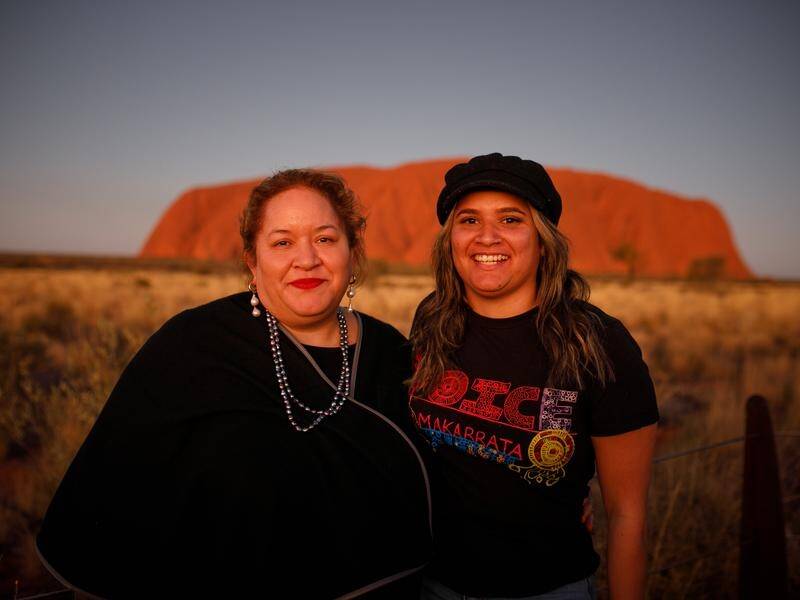
With the referendum on a First Nations voice fast approaching and racism on the national agenda after journalist Stan Grant was targeted, National Reconciliation Week is shaping up as particularly significant this year.
For Cobble Cobble woman Professor Megan Davis, it’s a time for both action and reflection.
A time for everyone to take a moment and listen to the voices of Aboriginal and Torres Strait Islander people.
“That’s why we’re saying it’s really critical for Australians to read the Uluru statement in National Reconciliation Week to reflect upon what reconciliation means,” Prof Davis said.
The theme for 2023 is ‘Be A Voice For Generations’, which honours those who fought for justice and those working to tackle the unfinished business of reconciliation, including the voice to parliament.
Reconciliation Australia CEO Karen Mundine said there has long been a strong thread in Australian history of people striving to build a just society.
“Australian history has included many examples of non-First Nations Australians who stood with Aboriginal and Torres Strait Islander peoples during early strikes, protests and, notably, during the 1967 referendum,” she said.
“Australia has a long record of inspiring allyship and solidarity to address centuries of racism and injustice.”
Reconciliation Australia was established in 2001, but its roots began a decade earlier with the Council for Aboriginal Reconciliation.
That was set in motion by the 1987 Royal Commission into Aboriginal Deaths in Custody, which recommended a formal process of reconciliation between Aboriginal and Torres Strait Islander and non-Indigenous Australians.
Patrick Dodson, the ‘father of reconciliation’, was the Council’s first chair, followed by Dr Evelyn Scott.
After almost a decade of research, the council presented its final reports to the Howard Government – the Australian Declaration towards Reconciliation and The Roadmap for Reconciliation – at the Corroboree 2000 event in Sydney in May 2000.
Hundreds of thousands of people walked across bridges, including the Sydney Harbour Bridge, in support of reconciliation that year.
Some suggest the 1999 Republic Referendum was the genesis of the modern constitutional recognition project because it included a single line on Indigenous recognition in the proposed preamble drafted by Prime Minister John Howard.
The preamble failed to win the support of the Australian people.
The recommendations from the council in 2000 included an Apology to the Stolen Generations, a treaty with Indigenous people and a referendum on recognising First Nations people in the Constitution.
The Howard government rejected outright the idea of an apology and treaty, leaving many Indigenous people frustrated and cynical about the concept of reconciliation if it meant ignoring the voices of First Nations people and not committing to substantive change.
Prof Davis, who co-chairs the Uluru Dialogues and has been working on constitutional recognition for more than a decade, says this year’s theme referencing the voice has particular resonance.
She wants everyone to read – or reread – the Uluru Statement from the Heart and see for themselves what it says.
“The Uluru Statement from the Heart has brought meat and bones and substance back to reconciliation,” she said.
“Our people can be really critical about reconciliation in Australia because it tends to avoid political issues and injustice is political.
“Uluru brought justice back to reconciliation.
“And so it’s really important for all Australians to read it because that’s what reconciliation is about.”
Thousands of workplaces, schools, early learning services, universities, councils, and other organisations hold events during National Reconciliation Week.
This year, LinkedIn has partnered with Indigenous creative consultancy Campfire X, in a project aimed at platforming First Nations voices in the workplace.
The event will highlight the voices of Indigenous professionals – including Noongar man Shane Hearn, CEO of First Nations Media Australia – and their allies to speak up about their experiences.
“Amplifying Indigenous voices during this period is really important,” Professor Hearn said.
“This is another opportunity to bring people into the conversation and is also a campaign that I support because I believe that we need allyship in the Aboriginal space.
“What better way to engage other CEOs and talk about the perception and understanding and knowledge of reconciliation and share my experience in the reconciliation process as an Aboriginal person.”
Prof Hearn said that to him, reconciliation means an opportunity for the nation to engage in a conversation about history and build understanding.
“Firstly, respect what’s happened in our history to Aboriginal people,” he said.
“And then take the opportunity to talk about that with different people.”
Reconciliation Australia’s research indicates a large reservoir of community support for the next steps in the nation’s reconciliation journey, including the voice, treaty-making and truth-telling.
“Reconciliation is about building a better nation, a more united Australia that respects and takes pride in 65,000 years of Aboriginal and Torres Strait Islander cultures, histories, stories and achievements,” Ms Mundine said.
“An Australia that believes in the right of First Nations peoples to make decisions about our lives and our communities and an Australia that stands opposed to racism, inequity and injustice.
“I urge all Australians to join me in participating in activities this National Reconciliation Week and to raise our voices for the future.”
Professor Davis said National Reconciliation Week provides an opportunity for deeper understanding.
“It’s not just about truth, it’s about justice,” she said.
“And the key driving question for the justice component is to say to the people who have been wronged ‘what does repair look like to you?’
“At Uluru six years ago we were asked and we said ‘repair is a constitutional voice.'”
National Reconciliation Week runs from Saturday to June 3.
Australian Associated Press
